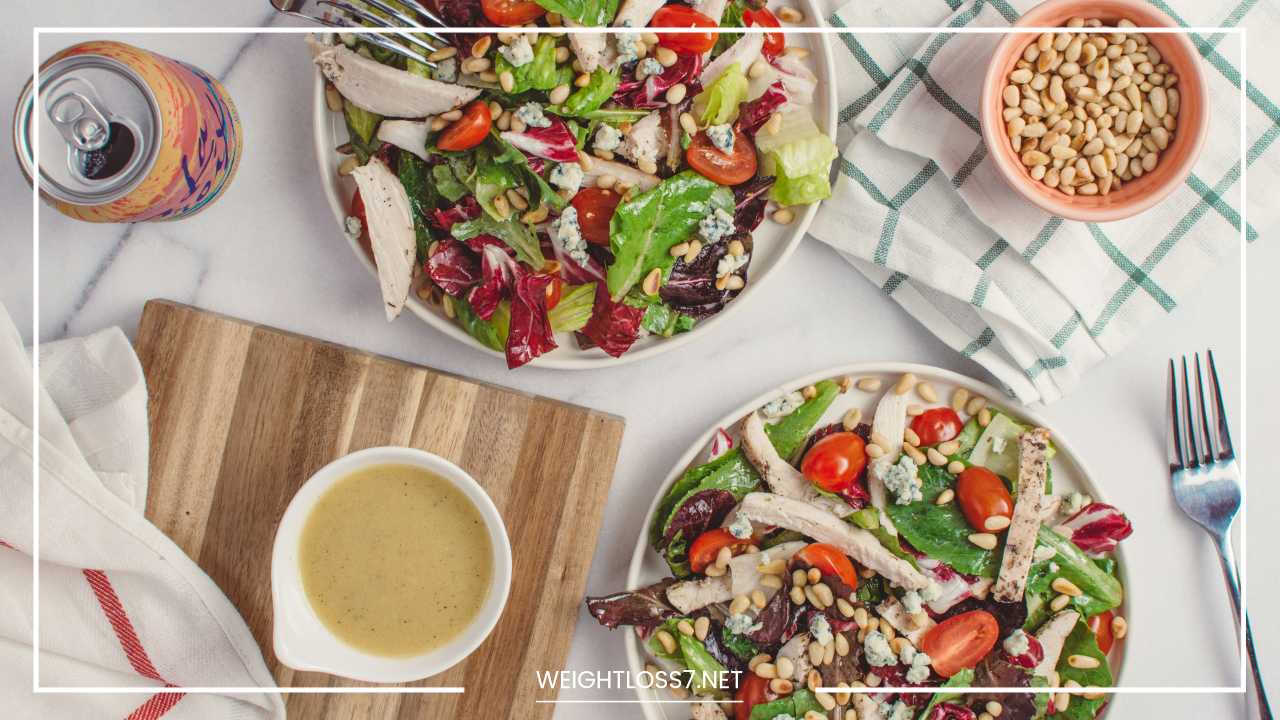Low Carb Diet Plan for Weight Loss

Low Carb Diet Plan
Dive into Deliciousness: A Low-Carb Diet Plan for Health and Vitality
Considering a low-carb diet? You’re joining a movement! Millions around the world have embraced this approach to achieve weight loss, manage blood sugar, and boost overall health. But with so much information swirling around, where do you begin?
This comprehensive guide dives deep into the world of low-carb eating, equipping you with the knowledge and tools to craft a personalized plan that tantalizes your taste buds and fuels your goals.
Understanding the Carb Conundrum: Friend or Foe?
Carbohydrates, or carbs, are the body’s primary source of energy. They’re found in a wide array of foods, from grains and fruits to vegetables and legumes. When we consume carbs, our bodies break them down into glucose (sugar) which enters our bloodstream and fuels our cells.
However, the story doesn’t end there. Excessive carb intake, particularly from refined sources like white bread, sugary drinks, and processed snacks, can lead to blood sugar spikes and crashes. This rollercoaster ride of highs and lows can trigger cravings, contribute to weight gain, and increase the risk of health concerns like type 2 diabetes.
A low-carb diet aims to moderate carb intake, promoting a steadier flow of energy and potentially offering various health benefits.
But it’s important to remember that carbs aren’t all bad. Complex carbohydrates, found in whole grains, vegetables, and legumes, are packed with fiber, vitamins, and minerals that are essential for a balanced diet.
A Spectrum of Choices: Exploring Different Low-Carb Diets
The beauty of low-carb is its flexibility. There’s no single approach that fits everyone. Here’s a closer look at some popular variations to help you find your perfect match:
- Ketogenic Diet (Keto): This high-fat, very-low-carb approach restricts carbs to a mere 20-50 grams per day, forcing the body to burn stored fat for fuel (ketosis). This metabolic shift can be highly effective for weight loss, but it requires careful planning and monitoring to ensure safety and prevent nutrient deficiencies.
- Atkins Diet: This phased plan offers a structured approach. It starts with a very low carb intake (20g) and gradually increases carbs as you reach your weight loss goals. This allows for more flexibility as you progress.
- South Beach Diet: This low-carb, moderate-protein, and good-fat plan prioritizes lean protein sources like fish and chicken, healthy fats like avocados and olive oil, and low-glycemic (slow-digesting) carbs like whole grains and non-starchy vegetables. This balanced approach provides sustained energy and promotes satiety.
- Paleo Diet: This philosophy focuses on whole, unprocessed foods similar to what our hunter-gatherer ancestors might have eaten. While not strictly a low-carb diet, it naturally results in lower carb intake due to its emphasis on meat, fish, eggs, vegetables, fruits, nuts, and seeds, with limitations on grains, legumes, and dairy products.
Crafting Your Low-Carb Roadmap: A Step-by-Step Guide to Success
Ready to personalize your low-carb journey? Follow these steps to set yourself up for success:
- Set SMART Goals: Don’t just aim to “lose weight.” Be Specific about your desired outcome (e.g., lose 10 lbs in 3 months). Make your goals Measurable (track your weight and progress photos), Achievable (set a realistic pace), Relevant (align your goals with your overall health), and Time-bound (give yourself a timeframe).
- Consult Your Doctor: A discussion with your doctor is crucial, especially if you have any underlying health conditions or are taking medications. They can help you determine if a low-carb diet is safe and appropriate for you and provide guidance to ensure you’re meeting your nutritional needs.
- Determine Your Carb Intake: Research different low-carb approaches and choose one that aligns with your goals, preferences, and lifestyle. There’s no one-size-fits-all answer! Aim to start with a moderate carb restriction (around 100-150 grams per day) and adjust based on your individual needs and progress.
- Stock Your Kitchen: Makeover your pantry and fridge with low-carb staples. Think leafy greens, broccoli, cauliflower, asparagus, fatty fish (salmon, sardines), eggs, nuts (almonds, walnuts), seeds (chia, flax), healthy oils (olive oil, avocado oil), and low-glycemic fruits (berries). Consider pre-chopping vegetables and prepping snacks in advance to save time and avoid unhealthy choices when hunger strikes.
- Plan Your Meals: Creating a weekly meal plan is a game-changer. It helps you stay on track, avoid unhealthy temptations, and ensure you’re incorporating a variety of low-carb options throughout the week. Here are some tips for successful meal planning:
- Utilize online resources: Numerous websites and apps offer low-carb meal plans and recipe inspiration.
- Cook in batches: Prepare larger portions of protein sources like grilled chicken or baked salmon to use in multiple dishes throughout the week.
- Embrace leftovers: Leftovers can be your best friend! Repurpose them for lunch the next day or get creative and transform them into a new dish.
- Don’t forget breakfast: Starting your day with a satisfying low-carb breakfast sets the tone for healthy eating choices throughout the day.
Fueling Your Body: A Day of Delicious Low-Carb Inspiration
Here’s a sample low-carb day to inspire your culinary creations, with options for different preferences:
-
Breakfast:
- Keto: Bulletproof coffee (coffee blended with grass-fed butter and MCT oil) with a side of scrambled eggs and spinach.
- Atkins: Greek yogurt with berries and a sprinkle of chopped nuts.
- South Beach: Two whole-wheat eggs with sauteed mushrooms and a slice of whole-grain toast.
- Paleo: Smoothie made with almond milk, protein powder, spinach, and a handful of berries.
-
Lunch:
- Keto: Tuna salad with chopped celery and avocado, served on a bed of romaine lettuce.
- Atkins: Grilled chicken breast with a side salad dressed with olive oil and vinegar.
- South Beach: Lentil soup with a side of mixed greens and a drizzle of balsamic vinaigrette.
- Paleo: Salmon with roasted Brussels sprouts and a dollop of pesto.
-
Dinner:
- Keto: Beef stir-fry with broccoli, peppers, and onions in a low-carb sauce.
- Atkins: Baked cod with roasted asparagus and cauliflower rice.
- South Beach: Turkey chili with a side of low-carb cornbread (made with almond flour).
- Paleo: Chicken fajitas with sauteed peppers and onions, wrapped in lettuce leaves with a dollop of guacamole.
-
Snacks: Throughout the day, choose healthy and satisfying low-carb options like:
- Handful of almonds and walnuts.
- Celery sticks with almond butter or cream cheese.
- Sliced cucumber with a sprinkle of feta cheese and a drizzle of olive oil.
- Small serving of berries with whipped cream.
- Hard-boiled eggs.
- String cheese.
Beyond the Scale: Unveiling the Additional Benefits of Low-Carb
While weight loss is a common goal for many embarking on a low-carb journey, the potential benefits extend far beyond the scale. Here’s a deeper dive into some of the additional advantages:
- Improved Blood Sugar Control: Lower carb intake can be particularly beneficial for those with prediabetes or type 2 diabetes. By reducing blood sugar spikes and promoting steadier levels, low-carb diets can help manage the condition and potentially improve insulin sensitivity.
- Reduced Heart Disease Risk: Low-carb diets that emphasize healthy fats like olive oil, avocado, and nuts, along with moderate protein intake, may contribute to a lower risk of heart disease by improving cholesterol levels and reducing inflammation.
- Enhanced Focus and Energy: Stable blood sugar levels can lead to more sustained energy throughout the day, improved cognitive function, and reduced brain fog. You may experience sharper focus and better concentration.
- Reduced Appetite and Increased Satiety: Protein and healthy fats are more satiating than carbohydrates. A low-carb diet can help you feel fuller for longer, reducing cravings and potentially leading to a decrease in overall calorie intake.
Remember: Sustainability is Key to Long-Term Success
Like any dietary change, consistency is crucial for reaping the rewards of a low-carb approach. Here are some additional tips to make your low-carb journey sustainable and enjoyable:
- Focus on Whole, Unprocessed Foods: Prioritize nutrient-rich options like vegetables, lean protein sources, healthy fats, and low-glycemic fruits over processed foods that might be low-carb but lack essential vitamins and minerals.
- Don’t Deprive Yourself: Allow for occasional indulgences in moderation. Restrictive diets are difficult to maintain in the long run. A birthday cake at a friend’s party or a scoop of ice cream on a hot summer day won’t derail your progress. Enjoy it mindfully and get back on your low-carb track.
- Enjoy it mindfully and get back on track: The key is to not let occasional indulgences turn into a free-for-all. Practice mindful eating and savor the treat, then return to your low-carb routine.
- Find a Support System: Surround yourself with positive influences. Join online communities or connect with friends on a similar journey for motivation and accountability. Share recipes, tips, and challenges to keep each other inspired.
- Listen to Your Body: Pay attention to your hunger and satiety cues. Don’t force yourself to eat when you’re not hungry, and stop eating when you’re comfortably full.
- Celebrate Non-Scale Victories: Focus on the positive changes you experience beyond the number on the scale. More energy, improved sleep, clearer thinking, and better digestion are all victories worth celebrating!
- Make it a Lifestyle, Not a Diet: View low-carb eating as a sustainable way of life, not a temporary fix. Develop healthy habits you can maintain for the long term.
In Conclusion: Embrace the Journey
The world of low-carb offers a path to weight management, improved health, and a renewed sense of vitality. With the right knowledge, planning, and a positive mindset, you can embark on a delicious and rewarding journey.
Remember, this is your journey, so personalize it, explore different approaches, and find what works best for you. Embrace the exploration, celebrate the victories, and enjoy the process of creating a healthier, happier you!
Additional Resources:
- American Diabetes Association: https://diabetesjournals.org/spectrum/article/33/2/133/32999/Low-Carbohydrate-and-Very-Low-Carbohydrate-Diets
- The National Institute of Diabetes and Digestive and Kidney Diseases: https://www.niddk.nih.gov/health-information/weight-management/adult-overweight-obesity
- Diet Doctor: https://www.dietdoctor.com/
- Ruled Me (Low-Carb Recipes and Resources): https://www.ruled.me/

















